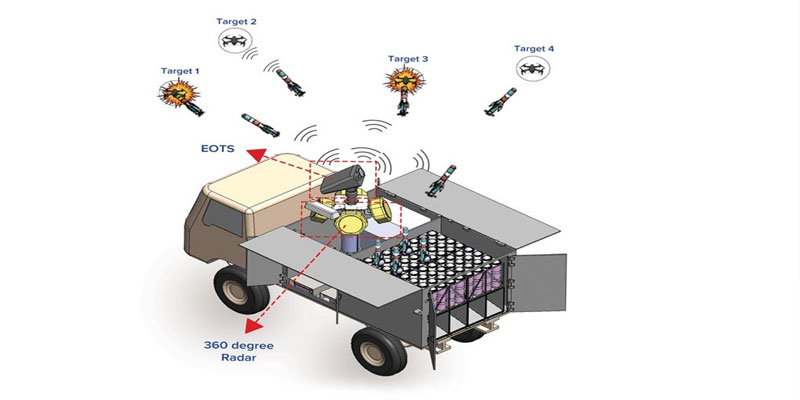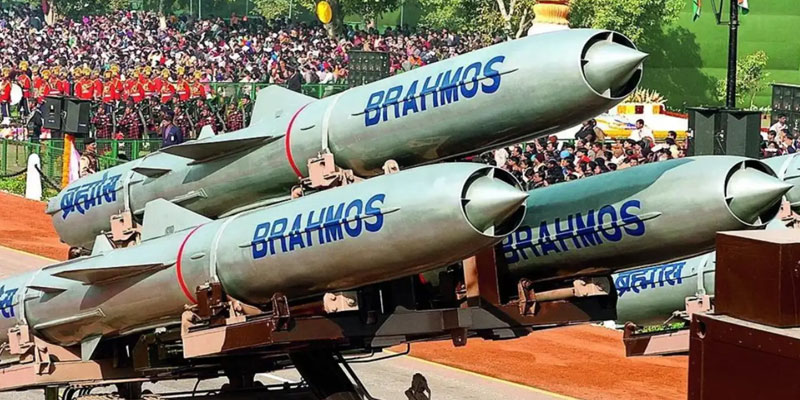India took a major stride in modern warfare readiness with the successful test-firing of its indigenous swarm drone defence system, ‘Bhargavastra’, developed by Solar Defence and Aerospace Limited (SDAL). The micro rockets forming the core of this low-cost, hard-kill counter-drone system underwent rigorous validation at the Seaward Firing Range in Gopalpur, Odisha, where all designated mission objectives were met with precision.
Over three separate trials conducted on May 13, 2025, in the presence of senior Army Air Defence (AAD) officials, Bhargavastra showcased its ability to neutralise drone threats under both single and salvo firing modes. Two tests involved firing individual rockets, while a third trial executed salvo fire, launching two rockets within two seconds—each delivering consistent performance in meeting launch and lethality parameters. These results marked a significant benchmark in India’s efforts to build layered and indigenous air defence systems.

A Technological Leap in Counter-Drone Warfare
With drone swarms emerging as a new-age threat to national security infrastructure, Bhargavastra presents a timely and critical solution. It operates in two robust layers: an unguided micro-rocket system with a lethal radius of 20 meters designed to counter large swarms of drones up to 2.5 km away, and a guided micro-missile layer—previously tested—for pinpoint accuracy against individual UAVs.
This dual-layered architecture provides flexibility to adapt the system to various terrains, including high-altitude regions exceeding 5,000 meters above sea level. Such adaptability is essential for India’s diverse defence theatre—from the mountainous borders of Ladakh to dense urban zones and sensitive installations.
Designed to be modular and scalable, Bhargavastra can be tailored to specific mission requirements. Its open architecture allows for integration of soft-kill measures like jamming and spoofing, alongside its kinetic interceptors. Radar, Electro-Optical (EO), and RF sensors can be deployed in different configurations, offering comprehensive tiered Air Defence (AD) coverage.
Furthermore, Bhargavastra is engineered for seamless compatibility with network-centric warfare systems already in use by the Indian Armed Forces. This enhances its interoperability and deployment readiness in real-time threat environments.
Command and Control: The Heart of Bhargavastra
At its core lies an advanced Command-and-Control Centre equipped with sophisticated C4I (Command, Control, Communications, Computers, and Intelligence) capabilities. Its radar can detect low radar cross-section (LRCS) aerial targets from 6 to 10 kilometres away, and the integrated EO/IR suite ensures precision tracking and classification, even under challenging conditions.
The system allows real-time tracking and engagement of multiple aerial threats, offering 360-degree situational awareness. Operators can isolate individual UAVs or neutralise entire swarms with swift tactical decisions—a crucial asset in asymmetric and hybrid warfare scenarios.
One Breakthrough After Another
Bhargavastra’s successful test is not just a technological milestone but a reflection of India’s growing self-reliance in defence manufacturing. Coming on the heels of key achievements like the BrahMos combat deployment, indigenous fighter jets, and the expanding semiconductor ecosystem, Bhargavastra adds another layer to India’s defence credibility.
As drone warfare becomes increasingly accessible and asymmetric threats evolve, systems like Bhargavastra will serve as frontline solutions. With its cost-effective, modular, and indigenous design, it exemplifies India’s Make in India, make for the World vision—and positions the country as a rising force in next-generation air defence systems.
(With agency inputs)





